Filters
Date Types (for Date Range)
Extensions
Types
Contacts
Categories
Tag Types
Tag Schemes
|
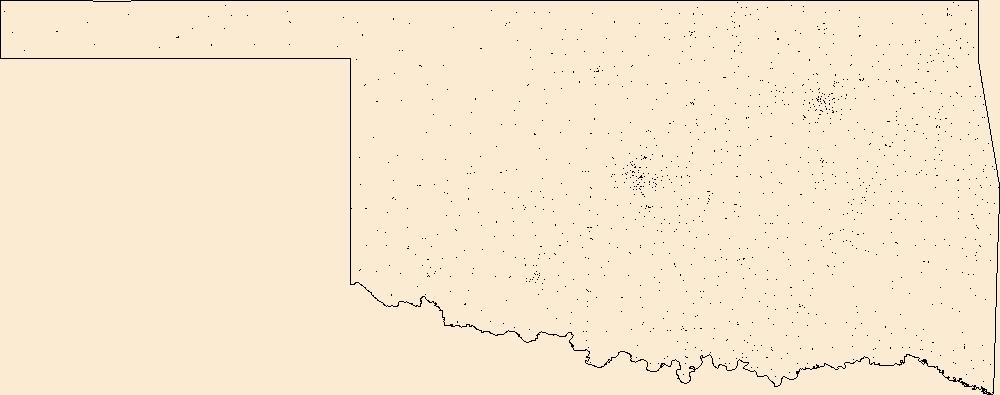
Geospatial data includes structures and other selected map features.
Tags: Adair,
Alfalfa,
Atoka,
Beaver,
Beckham, All tags...
Blaine,
Bryan,
Caddo,
Campground,
Canadian,
Carter,
Cherokee,
Choctaw,
Cimarron,
Cleveland,
Coal,
College / University,
Comanche,
Cotton,
Courthouse,
Craig,
Creek,
Custer,
Delaware,
Dewey,
Downloadable Data,
Ellis,
Esri Shapefile nan,
Fire Station/ EMS Station,
Garfield,
Garvin,
Grady,
Grant,
Greer,
Harmon,
Harper,
Haskell,
Hospital/Medical Center,
Hughes,
Information Center,
Jackson,
Jefferson,
Johnston,
Kay,
Kingfisher,
Kiowa,
Latimer,
Law Enforcement,
Le Flore,
Lincoln,
Logan,
Love,
Major,
Marshall,
Mayes,
McClain,
McCurtain,
McIntosh,
Murray,
Muskogee,
National Structures Dataset (NSD),
National Structures Dataset (NSD),
Noble,
Nowata,
OK,
Okfuskee,
Oklahoma,
Oklahoma,
Okmulgee,
Osage,
Ottawa,
Pawnee,
Payne,
Pittsburg,
Pontotoc,
Post Office,
Pottawatomie,
Prison/ Correctional Facility,
Pushmataha,
Roger Mills,
Rogers,
School,
School:Elementary,
School:High School,
School:Middle School,
Seminole,
Sequoyah,
Shapefile,
State,
State,
State Capitol,
Stephens,
Structures,
Technical School,
Texas,
Tillman,
Town Hall,
Trade School,
Trailhead,
Tulsa,
US,
United States,
Visitor Center,
Wagoner,
Washington,
Washita,
Woods,
Woodward,
structure, Fewer tags
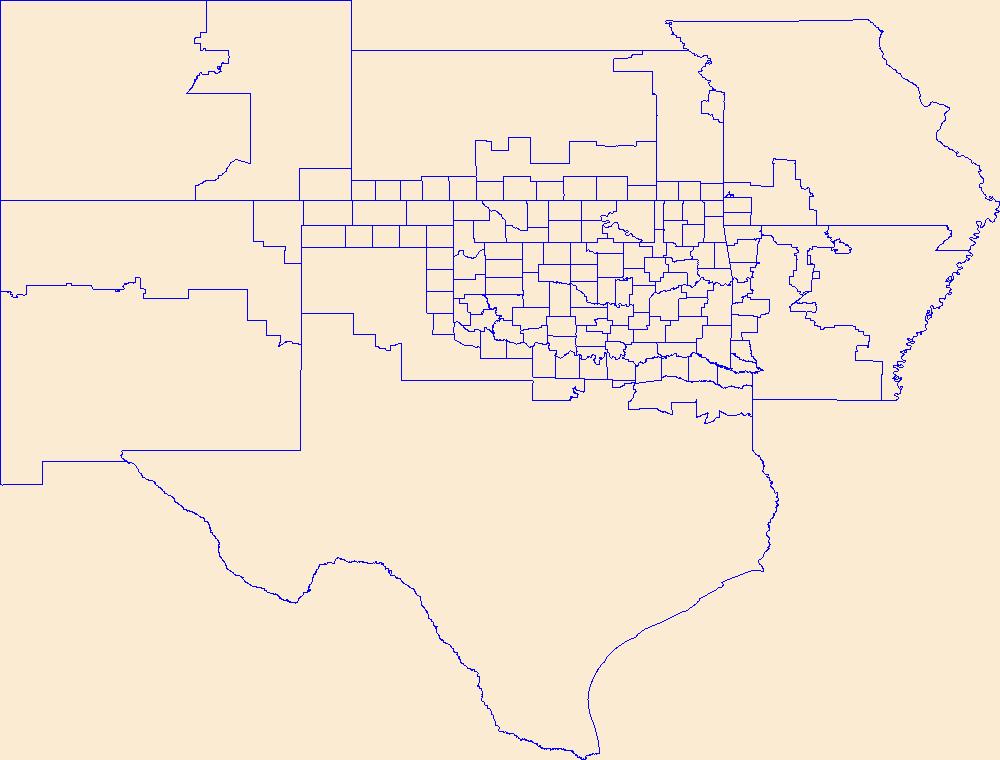
Geospatial data is comprised of government boundaries.
Types: Citation;
Tags: Adair,
Alfalfa,
Atoka,
Beaver,
Beckham, All tags...
Blaine,
Boundaries,
Bryan,
Caddo,
Canadian,
Carter,
Cherokee,
Choctaw,
Cimarron,
Cleveland,
Coal,
Comanche,
Cotton,
County or Equivalent,
Craig,
Creek,
Custer,
Delaware,
Dewey,
Downloadable Data,
Ellis,
Esri File GeoDatabase 10,
FileGDB,
Garfield,
Garvin,
Grady,
Grant,
Greer,
Harmon,
Harper,
Haskell,
Hughes,
Incorporated Place,
Jackson,
Jefferson,
Johnston,
Jurisdictional,
Kay,
Kingfisher,
Kiowa,
Latimer,
Le Flore,
Lincoln,
Logan,
Love,
Major,
Marshall,
Mayes,
McClain,
McCurtain,
McIntosh,
Minor Civil Division,
Murray,
Muskogee,
National Boundary Dataset (NBD),
National Boundary Dataset (NBD),
Native American Area,
Noble,
Nowata,
OK,
Okfuskee,
Oklahoma,
Oklahoma,
Okmulgee,
Osage,
Ottawa,
PLSS First Division,
PLSS Special Survey,
PLSS Township,
Pawnee,
Payne,
Pittsburg,
Pontotoc,
Pottawatomie,
Public Land Survey System,
Pushmataha,
Reserve,
Roger Mills,
Rogers,
Seminole,
Sequoyah,
State,
State,
State or Territory,
Stephens,
Texas,
Tillman,
Tulsa,
U.S. National Grid,
US,
Unincorporated Place,
United States,
Wagoner,
Washington,
Washita,
Woods,
Woodward,
boundaries,
boundary,
cadastral surveys,
geographic names,
land ownership,
land use maps,
legal land descriptions,
political and administrative boundaries,
zoning maps, Fewer tags
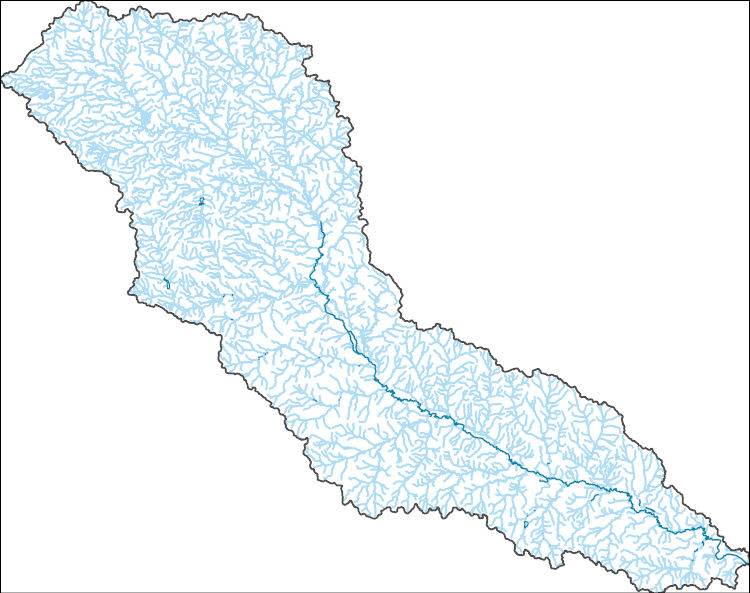
The National Hydrography Dataset (NHD) is a feature-based database that interconnects and uniquely identifies the stream segments or reaches that make up the nation's surface water drainage system. NHD data was originally developed at 1:100,000-scale and exists at that scale for the whole country. This high-resolution NHD, generally developed at 1:24,000/1:12,000 scale, adds detail to the original 1:100,000-scale NHD. (Data for Alaska, Puerto Rico and the Virgin Islands was developed at high-resolution, not 1:100,000 scale.) Local resolution NHD is being developed where partners and data exist. The NHD contains reach codes for networked features, flow direction, names, and centerline representations for areal water...
Tags: Administrative watershed units,
Administrative watershed units,
Area of Complex Channels,
Area to be submerged,
Atoka, All tags...
Basin,
Basin,
Bay/Inlet,
Boundaries,
Boundary,
Bridge,
Bryan,
Canal/Ditch,
Choctaw,
Coal,
Coastline,
Connector,
Dam/Weir,
Downloadable Data,
Drainage areas for surface water,
Drainageway,
Esri File GeoDatabase 10,
Estuary,
FileGDB,
Flow direction network,
Flume,
ForeShore,
Gaging Station,
Gate,
HU-8,
HU-8 Subbasin,
HU10,
HU12,
HU14,
HU16,
HU2,
HU4,
HU6,
HU8,
HU8_11140104,
HUC,
Hazard Zone,
Hydrographic,
Hydrography,
Hydrography,
Hydrography,
Hydrologic Unit Code,
Hydrologic Units,
Ice mass,
Inundation Area,
Johnston,
Levee,
Line,
Lock Chamber,
Marsh,
National Hydrography Dataset (NHD),
National Hydrography Dataset (NHD) Best Resolution,
National Hydrography Dataset (NHD) Best Resolution,
Nonearthen Shore,
OK,
Oklahoma,
Orthoimage,
Playa,
Point,
PointEvent,
Pond,
Pontotoc,
Rapids,
Rapids,
Reach,
Reach code,
Reef,
Region,
Reservoir,
Rock,
Sea/Ocean,
Sink/Rise,
Sounding Datum Line,
Special Use Zone,
Special Use Zone Limit,
Spillway,
Stream,
Stream/River,
Sub-basin,
Sub-region,
Subbasin,
Submerged Stream,
Subregion,
Subwatershed,
Surface water systems,
Swamp,
Topographic,
Tunnel,
US,
Underground Conduit,
United States,
WBD,
WBD,
Wall,
Wash,
Water Intake Outflow,
Waterfall,
Watershed,
Watershed Boundaries,
Watershed Boundary Dataset,
Watershed Boundary Dataset,
Well,
artificial path,
boundaries,
dams,
drainage systems and characteristics,
inlandWaters,
lakes,
ngda,
rivers, Fewer tags
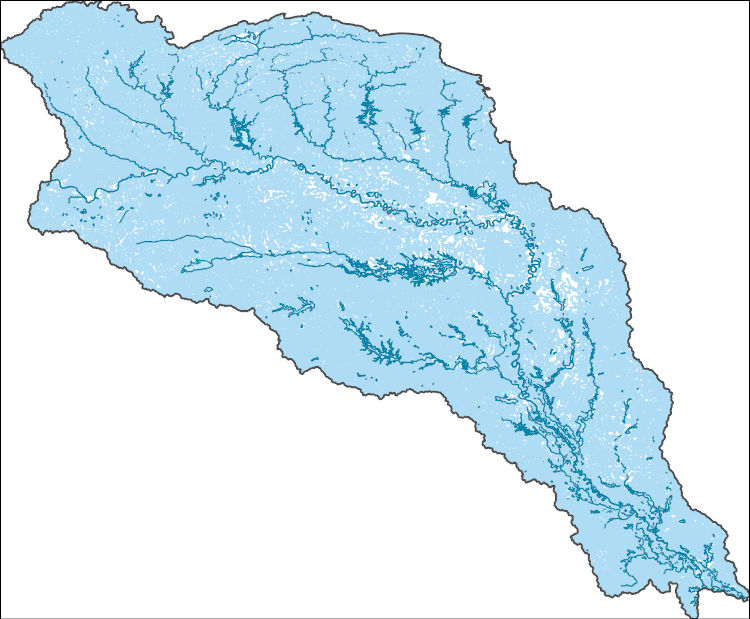
The National Hydrography Dataset (NHD) is a feature-based database that interconnects and uniquely identifies the stream segments or reaches that make up the nation's surface water drainage system. NHD data was originally developed at 1:100,000-scale and exists at that scale for the whole country. This high-resolution NHD, generally developed at 1:24,000/1:12,000 scale, adds detail to the original 1:100,000-scale NHD. (Data for Alaska, Puerto Rico and the Virgin Islands was developed at high-resolution, not 1:100,000 scale.) Local resolution NHD is being developed where partners and data exist. The NHD contains reach codes for networked features, flow direction, names, and centerline representations for areal water...
Tags: AR,
Administrative watershed units,
Administrative watershed units,
Area of Complex Channels,
Area to be submerged, All tags...
Arkansas,
Atoka,
Basin,
Basin,
Bay/Inlet,
Bienville,
Bossier,
Boundaries,
Boundary,
Bowie,
Bridge,
Bryan,
Caddo,
Camp,
Canal/Ditch,
Cass,
Choctaw,
Claiborne,
Coal,
Coastline,
Columbia,
Connector,
Dam/Weir,
De Soto,
Delta,
Downloadable Data,
Drainage areas for surface water,
Drainageway,
Esri Shapefile nan,
Estuary,
Fannin,
Flow direction network,
Flume,
ForeShore,
Franklin,
Gaging Station,
Gate,
Grant,
Grayson,
Gregg,
HU-4,
HU-4 Subregion,
HU10,
HU12,
HU14,
HU16,
HU2,
HU4,
HU4_1114,
HU6,
HU8,
HUC,
Harrison,
Hazard Zone,
Hempstead,
Hopkins,
Howard,
Hughes,
Hunt,
Hydrographic,
Hydrography,
Hydrography,
Hydrography,
Hydrologic Unit Code,
Hydrologic Units,
Ice mass,
Inundation Area,
Johnston,
LA,
Lafayette,
Lamar,
Latimer,
Le Flore,
Levee,
Lincoln,
Line,
Little River,
Lock Chamber,
Louisiana,
Marion,
Marsh,
McCurtain,
Miller,
Morris,
Murray,
Natchitoches,
National Hydrography Dataset (NHD),
National Hydrography Dataset (NHD) Best Resolution,
National Hydrography Dataset (NHD) Best Resolution,
Nevada,
Nonearthen Shore,
OK,
Oklahoma,
Orthoimage,
Panola,
Pike,
Pittsburg,
Playa,
Point,
PointEvent,
Polk,
Pond,
Pontotoc,
Pushmataha,
Rapides,
Rapids,
Rapids,
Reach,
Reach code,
Red River,
Reef,
Region,
Reservoir,
Rock,
Sabine,
Sea/Ocean,
Sevier,
Shapefile,
Sink/Rise,
Sounding Datum Line,
Special Use Zone,
Special Use Zone Limit,
Spillway,
Stream,
Stream/River,
Sub-basin,
Sub-region,
Subbasin,
Submerged Stream,
Subregion,
Subwatershed,
Surface water systems,
Swamp,
TX,
Texas,
Titus,
Topographic,
Tunnel,
US,
Underground Conduit,
United States,
Upshur,
Vernon,
WBD,
WBD,
Wall,
Wash,
Water Intake Outflow,
Waterfall,
Watershed,
Watershed Boundaries,
Watershed Boundary Dataset,
Watershed Boundary Dataset,
Webster,
Well,
Winn,
Wood,
artificial path,
boundaries,
dams,
drainage systems and characteristics,
inlandWaters,
lakes,
ngda,
rivers, Fewer tags
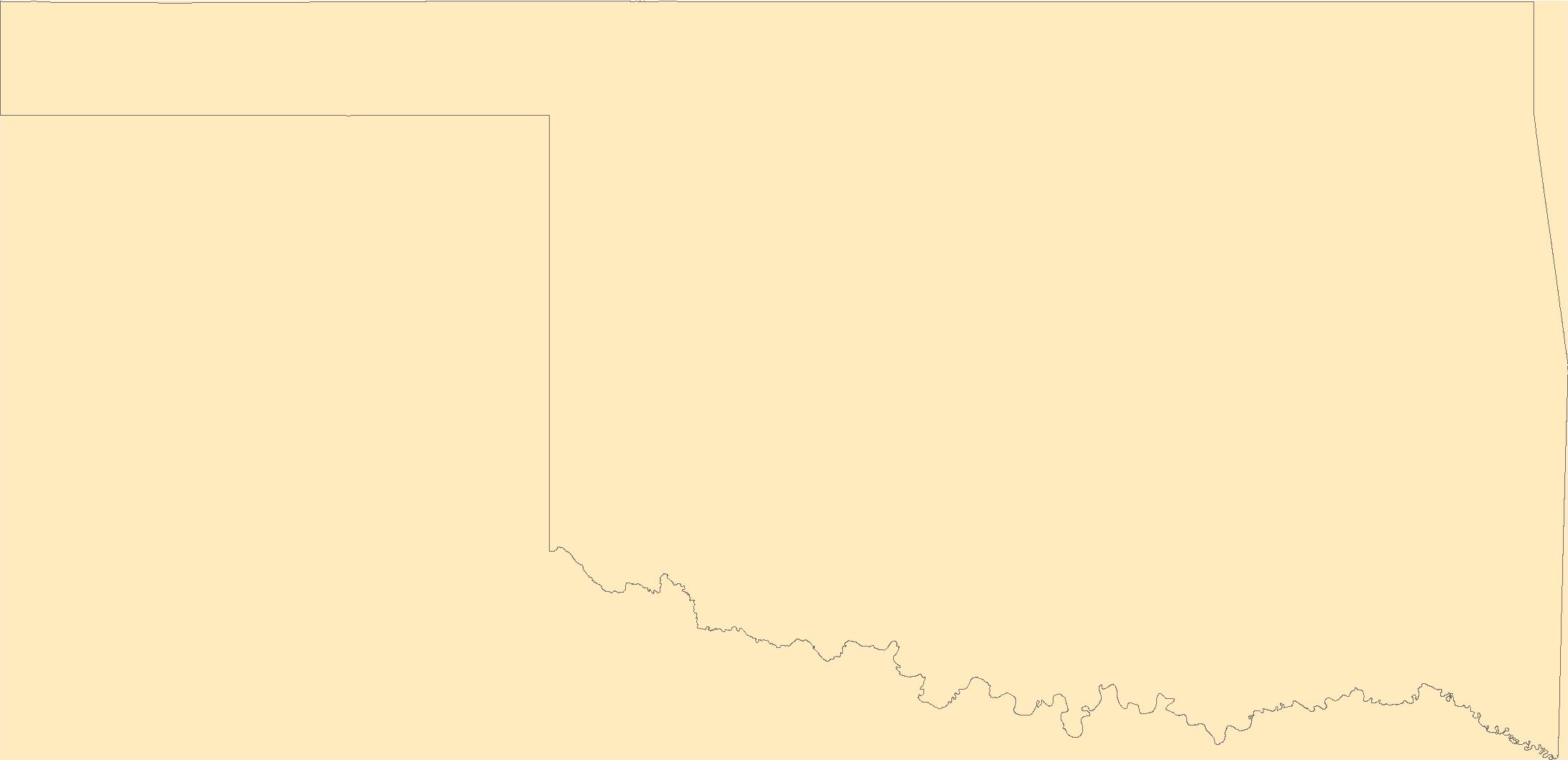
The Geographic Names Information System (GNIS) is the Federal standard for geographic nomenclature. The U.S. Geological Survey developed the GNIS for the U.S. Board on Geographic Names, a Federal inter-agency body chartered by public law to maintain uniform feature name usage throughout the Government and to promulgate standard names to the public. The GNIS is the official repository of domestic geographic names data; the official vehicle for geographic names use by all departments of the Federal Government; and the source for applying geographic names to Federal electronic and printed products of all types.
Tags: Adair,
Alfalfa,
Antarctica,
Antarctica,
Atoka, All tags...
BGN,
Beaver,
Beckham,
Blaine,
Board on Geographic Names,
Borough,
Bryan,
Caddo,
Canadian,
Carter,
Census Area,
Cherokee,
Choctaw,
Cimarron,
Cleveland,
Coal,
Comanche,
Commonwealth,
Cotton,
County,
Craig,
Creek,
Custer,
Delaware,
Dewey,
District,
Downloadable Data,
Ellis,
Feature class,
Feature coordinates,
Feature county,
Feature description,
Feature designation,
Feature history,
Feature indentification,
Feature name,
Feature state,
GNIS,
Garfield,
Garvin,
GeoPackage,
Geographic Names,
Geographic Names Full Model,
Geographic Names Information System,
Geographic feature,
Geographic name,
Geographical feature,
Geographical name,
Grady,
Grant,
Greer,
Harmon,
Harper,
Haskell,
Hughes,
Jackson,
Jefferson,
Johnston,
Kay,
Kingfisher,
Kiowa,
Latimer,
Le Flore,
Lincoln,
Logan,
Love,
Major,
Marshall,
Mayes,
McClain,
McCurtain,
McIntosh,
Municipio,
Murray,
Muskogee,
National Geographic Names Information System (GNIS),
National Geographic Names Information System (GNIS),
Noble,
Nowata,
OK,
Official feature name,
Okfuskee,
Oklahoma,
Oklahoma,
Okmulgee,
Open Geospatial Consortium GeoPackage 1.2,
Osage,
Ottawa,
Outlying Area,
Parish,
Pawnee,
Payne,
Pittsburg,
Place name,
Pontotoc,
Populated Place,
Pottawatomie,
Pushmataha,
Roger Mills,
Rogers,
Seminole,
Sequoyah,
State,
Stephens,
Territories,
Territory,
Texas,
Tillman,
Topographic Map,
Tulsa,
U.S. Board on Geographic Names,
U.S. Geological Survey,
US,
USA,
USBGN,
USGS,
United States,
United States,
United States,
Variant name,
Wagoner,
Washington,
Washita,
Woods,
Woodward,
antarctic,
database,
economy,
environment,
feature,
gazetteer,
geographic,
geographic names,
geographical,
geography,
geospatial,
imageryBaseMapsEarthCover,
inlandWaters,
location,
map,
name,
place,
placename,
society,
structure,
topographic map,
toponymy, Fewer tags
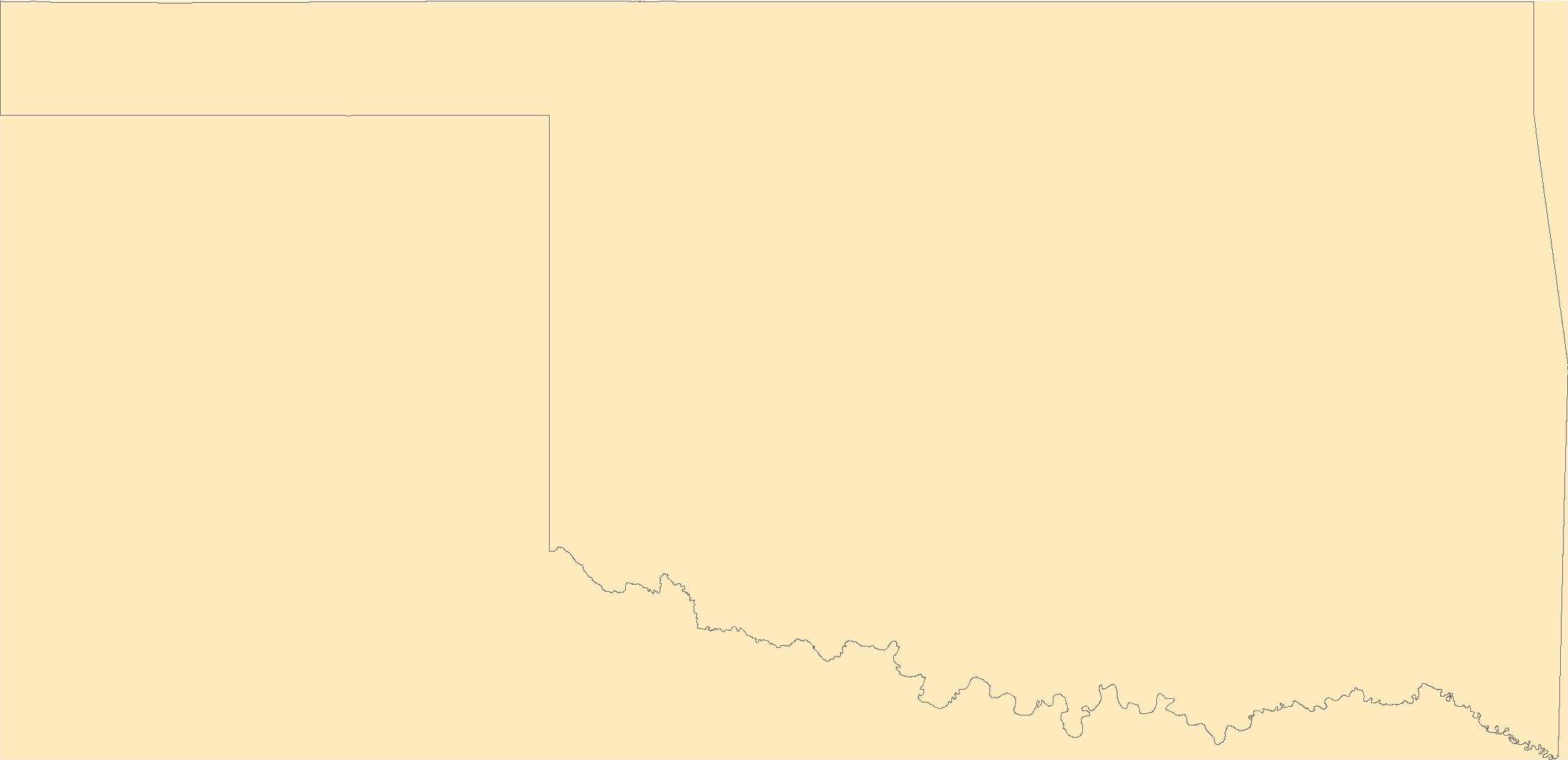
The Geographic Names Information System (GNIS) is the Federal standard for geographic nomenclature. The U.S. Geological Survey developed the GNIS for the U.S. Board on Geographic Names, a Federal inter-agency body chartered by public law to maintain uniform feature name usage throughout the Government and to promulgate standard names to the public. The GNIS is the official repository of domestic geographic names data; the official vehicle for geographic names use by all departments of the Federal Government; and the source for applying geographic names to Federal electronic and printed products of all types.
Tags: Adair,
Alfalfa,
Antarctica,
Antarctica,
Atoka, All tags...
BGN,
Beaver,
Beckham,
Blaine,
Board on Geographic Names,
Borough,
Bryan,
Caddo,
Canadian,
Carter,
Census Area,
Cherokee,
Choctaw,
Cimarron,
Cleveland,
Coal,
Comanche,
Commonwealth,
Cotton,
County,
Craig,
Creek,
Custer,
Delaware,
Dewey,
District,
Downloadable Data,
Ellis,
Esri File GeoDatabase 10,
Feature class,
Feature coordinates,
Feature county,
Feature description,
Feature designation,
Feature history,
Feature indentification,
Feature name,
Feature state,
FileGDB,
GNIS,
Garfield,
Garvin,
Geographic Names,
Geographic Names Full Model,
Geographic Names Information System,
Geographic feature,
Geographic name,
Geographical feature,
Geographical name,
Grady,
Grant,
Greer,
Harmon,
Harper,
Haskell,
Hughes,
Jackson,
Jefferson,
Johnston,
Kay,
Kingfisher,
Kiowa,
Latimer,
Le Flore,
Lincoln,
Logan,
Love,
Major,
Marshall,
Mayes,
McClain,
McCurtain,
McIntosh,
Municipio,
Murray,
Muskogee,
National Geographic Names Information System (GNIS),
National Geographic Names Information System (GNIS),
Noble,
Nowata,
OK,
Official feature name,
Okfuskee,
Oklahoma,
Oklahoma,
Okmulgee,
Osage,
Ottawa,
Outlying Area,
Parish,
Pawnee,
Payne,
Pittsburg,
Place name,
Pontotoc,
Populated Place,
Pottawatomie,
Pushmataha,
Roger Mills,
Rogers,
Seminole,
Sequoyah,
State,
Stephens,
Territories,
Territory,
Texas,
Tillman,
Topographic Map,
Tulsa,
U.S. Board on Geographic Names,
U.S. Geological Survey,
US,
USA,
USBGN,
USGS,
United States,
United States,
United States,
Variant name,
Wagoner,
Washington,
Washita,
Woods,
Woodward,
antarctic,
database,
economy,
environment,
feature,
gazetteer,
geographic,
geographic names,
geographical,
geography,
geospatial,
imageryBaseMapsEarthCover,
inlandWaters,
location,
map,
name,
place,
placename,
society,
structure,
topographic map,
toponymy, Fewer tags

This dataset of anticlines is intended primarily for reference; it includes major structures such as those shown on Plate 2, Principal structural features, Gulf of Mexico Basin (compiled by T.E. Ewing and R.F. Lopez), in Volume J, The Geology of North America (1991). This dataset contains basic data and interpretations developed and compiled by the U.S. Geological Survey's Framework Studies and Assessment of the Gulf Coast Project. Other major sources of data include publicly available information from state agencies as well as publications of the U.S. Geological Survey and other scientific organizations. In cases where company proprietary data were used to produce various derivatives such as contour surfaces, the...
Categories: Data,
pre-SM502.8;
Types: Downloadable,
Map Service,
OGC WFS Layer,
OGC WMS Layer,
Shapefile;
Tags: AL,
AR,
Anticlines,
Coal,
Coalbed Methane, All tags...
Coalbed methane resources,
Earth Science,
Economic geology,
Energy Resources,
FL,
Geology,
Geology,
Gulf Coast,
Gulf Coast Framework Studies,
Gulf of Mexico,
LA,
MS,
Miocene,
Natural Gas,
Natural Resources,
Natural gas resources,
Oil,
Oil sand resources,
Petroleum,
Resource Assessment,
TX,
Tertiary Systems,
U.S. Geological Survey,
USGS,
USGS Science Data Catalog (SDC),
United States,
economy,
geoscientificInformation,
gulfcoastframework,
gulfroom,
oilgas, Fewer tags

The maximum extent of Cretaceous onlap is generalized from Plate 3, Structure at the base and subcrop below Mesozoic marine section, Gulf of Mexico Basin (compiled by A. Salvador) in Volume J, The Geology of North America (1991). This dataset contains basic data and interpretations developed and compiled by the U.S. Geological Survey's Framework Studies and Assessment of the Gulf Coast Project. Other major sources of data include publicly available information from state agencies as well as publications of the U.S. Geological Survey and other scientific organizations. In cases where company proprietary data were used to produce various derivatives such as contour surfaces, the source is cited but the data are not...
Categories: Data,
pre-SM502.8;
Types: Downloadable,
Map Service,
OGC WFS Layer,
OGC WMS Layer,
Shapefile;
Tags: 47 = Western Gulf,
48 = East Texas Basin,
49 = Louisiana-Mississippi Salt Basins,
50 = Florida Peninsula,
AL, All tags...
AR,
Anticlines,
Coal,
Coalbed Methane,
Coalbed methane resources,
Earth Science,
Economic geology,
Energy Resources,
FL,
Geology,
Geology,
Gulf Coast,
Gulf Coast,
Gulf Coast Framework Studies,
Gulf of Mexico,
LA,
MS,
Miocene,
Natural Gas,
Natural Resources,
Natural gas resources,
Oil,
Oil sand resources,
Petroleum,
Resource Assessment,
TX,
Tertiary Systems,
U.S. Geological Survey,
US01 = Alabama,
US05 = Arkansas,
US12 = Florida,
US22 = Louisiana,
US28 = Mississippi,
US48 = Texas,
USGS,
USGS Science Data Catalog (SDC),
United States,
economy,
geoscientificInformation,
gulfcoastframework,
gulfroom,
oilgas, Fewer tags

The Appalachians are a landscape filled with globally-significant biological diversity and cultural resources that provides essential benefits to large cities and surrounding human communities. The region is also rich in energy resources that meet national and regional demands for energy. As wind, natural gas, and oil energy development expand along with traditional coal, there is an increasing need for research to inform discussions on how to meet immediate and future energy needs while sustaining the health of natural systems. To help address this need, the Appalachian LCC awarded a grant to The Nature Conservancy to assess current and future energy development across the entire region. Assessing Future Energy...
Categories: Data;
Tags: Academics & scientific researchers,
AppLCC,
Appalachian,
Conservation NGOs,
Data, All tags...
Data.gov Appalachian Landscape Conservation Cooperative,
Datasets/Database,
Federal resource managers,
Hunters & anglers,
Interested public,
Policy makers & regulators,
Private land owners,
Regional & county planners,
State agencies,
Tribes,
biota,
coal,
completed,
economy,
energy,
environment,
forest core,
gas,
geoscientificInformation,
probabilities,
shale,
tool,
vulnerability assessment,
watershed,
well,
wind, Fewer tags
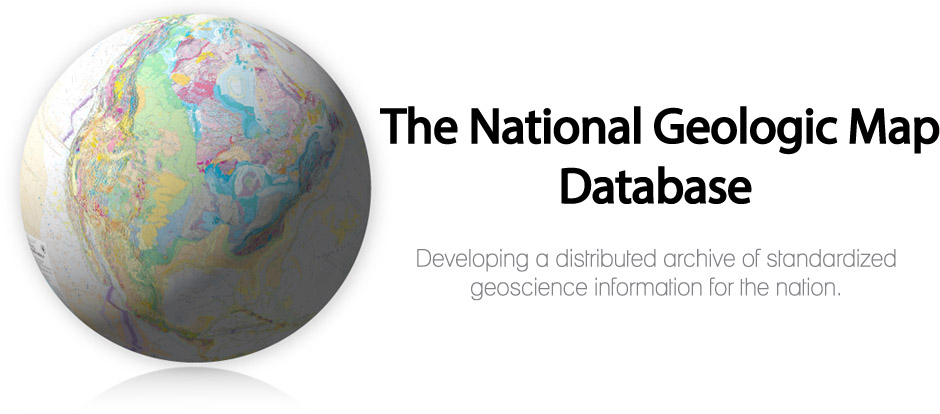
The National Geologic Map Database (NGMDB) is a Congressionally mandated national archive of geoscience maps, reports, and stratigraphic information. The Geologic Mapping Act of 1992 and its Reauthorizations calls for the U.S. Geological Survey and the Association of American State Geologists (AASG) to cooperatively build this national archive, according to technical and scientific standards whose development is coordinated by the NGMDB. The NGMDB consists of a comprehensive set of publication citations, stratigraphic nomenclature, downloadable content in raster and vector formats, unpublished source information, and guidance on standards development. The NGMDB contains information on more than 110,000 maps and...
Tags: AASG,
Aeromagnetics,
Association of American State Geologists,
Bedrock geology,
CSS, All tags...
Coal,
Coastal and marine geology,
Core Science Systems,
Earthquakes,
Environmental hazards,
Environmental resources,
GIS,
Geochemistry,
Geochronology,
Geologic map,
Geology,
Geophysics,
Geothermal resources,
Gravity,
Hazards,
Landslides,
Metallic resources,
NCGMP,
NGDA,
NGDA Geology Theme,
NGDAID52,
NGMDB,
National Cooperative Geologic Mapping Program,
National Geologic Map Database,
National Geospatial Data Asset,
Non-metallic resources,
North America,
Oil and gas,
Paleontology,
Petroleum,
Radioactivity,
Resources,
Stratigraphic nomenclature,
Stratigraphy,
Surficial geology,
U.S.,
U.S. Geological Survey,
US,
USGS,
USGS Science Data Catalog (SDC),
USGS:366411b4-98bc-41f7-876b-778f91aff6b6,
United States,
Volcanoes,
WMS,
Water resources,
Web-mapping,
geoscientificInformation,
image service,
mapview, Fewer tags

The U.S. Geological Survey (USGS) has compiled a geodatabase containing mineral-related geospatial data for 19 countries of interest in the Indo-Pacific region (area of study): Bangladesh, Bhutan, Brunei, Burma, Fiji, Malaysia, Mongolia, Nauru, New Caledonia, New Zealand, Papua New Guinea, Philippines, Singapore, Solomon Islands, South Korea (Republic of Korea), Sri Lanka, Taiwan, Timor-Leste, and Vietnam. The data can be used in analyses of the extractive fuel and nonfuel mineral industries integral for the successful operation of the mineral industries within the area of study. This geodatabase reflects the USGS ongoing commitment to its mission of understanding the nature and distribution of global mineral commodity...
Types: Map Service,
OGC WFS Layer,
OGC WMS Layer,
OGC WMS Service;
Tags: Asia,
Bangladesh,
Bhutan,
Brunei,
Burma, All tags...
Economic Geology,
Energy Resources,
Fiji,
Geography,
Indo-Pacific,
Information Sciences,
LNG,
Malaysia,
Malaysia-Thailand Joint Development Area (JDA),
Mineral Resources,
Mongolia,
NGL,
Nauru,
New Caledonia,
New Zealand,
Papua New Guinea,
Philippines,
Singapore,
Solomon Islands,
South Korea (Republic of Korea),
Sri Lanka,
Taiwan,
Timor-Leste,
USGS Science Data Catalog (SDC),
Vietnam,
alumina,
aluminum,
antimony,
arsenic,
bauxite,
bismuth,
cadmium,
calcium carbonate,
cement,
chromium,
clay,
coal,
coal area,
coal occurrence,
coal resources,
coalbed methane,
coalfield,
cobalt,
coke,
commodity,
continuous resources,
conventional resources,
copper,
copper occurrence,
copper resources,
development,
exploration,
feldspar,
ferroalloys,
fluorspar,
gallium,
garnet,
gas,
gas production,
gemstone,
gold,
graphite,
gypsum,
hydrocarbon resources,
hydrogen,
indium,
iron and steel,
iron ore,
iron sand,
lead,
lime,
liquefied natural gas,
liquid natural gas,
lithium,
magnesium,
manganese,
mica,
mine,
mineral,
mineral commodity,
mineral development,
mineral exploration,
mineral occurrence,
mineral processing,
mineral resources,
minerals,
mining,
mining exploration,
molybdenum,
natural gas,
natural gas liquids,
nickel,
niobium,
nitrogen,
oil,
oil and gas,
oil production,
palladium,
peat,
perlite,
permissive,
petroleum,
phosphate,
phosphate rock,
platinum,
platinum group elements,
porphyry copper,
potassium,
pyrophyllite,
rare earths,
recoverable resources,
refinery,
refining,
resources,
rhenium,
rhodium,
salt,
sand and gravel,
scandium,
sediment-hosted stratabound copper,
selenium,
shale gas,
shale oil,
silica,
silica sand,
silicon,
silver,
smelting,
stone,
sulfur,
talc,
tantalum,
tellurium,
tight gas,
tight oil,
tin,
titanium,
tracts,
tungsten,
unconventional resources,
undiscovered resources,
uranium,
vanadium,
zeolites,
zinc,
zirconium, Fewer tags
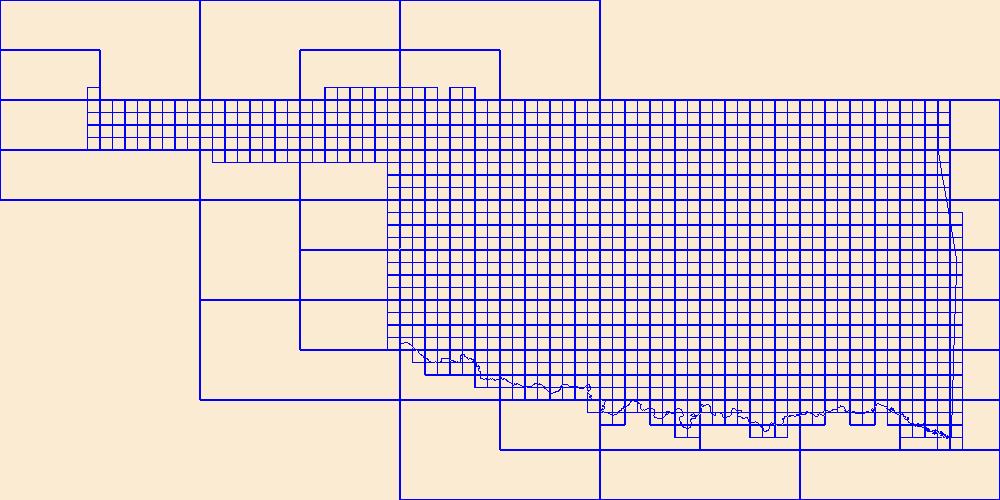
This data represents the map extent for current and historical USGS topographic maps for the United States and Territories, including 1 X 2 Degree, 1 X 1 Degree, 30 X 60 Minute, 15 X 15 Minute, 7.5 X 7.5 Minute, and 3.75 X 3.75 Minute. The grid was generated using ESRI ArcInfo GIS software.
Tags: Adair,
Alfalfa,
Atoka,
Beaver,
Beckham, All tags...
Blaine,
Boundaries,
Bryan,
Caddo,
Canadian,
Carter,
Cherokee,
Choctaw,
Cimarron,
Cleveland,
Coal,
Comanche,
Cotton,
Craig,
Creek,
Custer,
Delaware,
Dewey,
Downloadable Data,
Ellis,
Esri File GeoDatabase 10,
FileGDB,
Garfield,
Garvin,
Grady,
Grant,
Greer,
Harmon,
Harper,
Haskell,
Hughes,
Jackson,
Jefferson,
Johnston,
Kay,
Kingfisher,
Kiowa,
Latimer,
Le Flore,
Lincoln,
Logan,
Love,
Major,
Map Indices,
Map Indices,
Map Indices,
Marshall,
Mayes,
McClain,
McCurtain,
McIntosh,
Murray,
Muskogee,
Noble,
Nowata,
OK,
Okfuskee,
Oklahoma,
Oklahoma,
Okmulgee,
Osage,
Ottawa,
Pawnee,
Payne,
Pittsburg,
Pontotoc,
Pottawatomie,
Pushmataha,
Roger Mills,
Rogers,
Seminole,
Sequoyah,
State,
State,
Stephens,
Texas,
Tillman,
Tulsa,
US,
United States,
United States of America,
Wagoner,
Washington,
Washita,
Woods,
Woodward,
cells,
map indices,
polygon grid, Fewer tags

The volcanic provinces are modified after Plate 2, Principal structural features, Gulf of Mexico Basin (compiled by T.E. Ewing and R.F. Lopez) in Volume J, The Geology of North America (1991). This dataset contains basic data and interpretations developed and compiled by the U.S. Geological Survey's Framework Studies and Assessment of the Gulf Coast Project. Other major sources of data include publicly available information from state agencies as well as publications of the U.S. Geological Survey and other scientific organizations. In cases where company proprietary data were used to produce various derivatives such as contour surfaces, the source is cited but the data are not displayed.
Categories: Data,
pre-SM502.8;
Types: Downloadable,
Map Service,
OGC WFS Layer,
OGC WMS Layer,
Shapefile;
Tags: AL,
AR,
Anticlines,
Coal,
Coalbed Methane, All tags...
Coalbed methane resources,
Earth Science,
Economic geology,
Energy Resources,
FL,
Geology,
Geology,
Gulf Coast,
Gulf Coast Framework Studies,
Gulf of Mexico,
LA,
MS,
Miocene,
Natural Gas,
Natural Resources,
Natural gas resources,
Oil,
Oil sand resources,
Petroleum,
Resource Assessment,
TX,
Tertiary Systems,
U.S. Geological Survey,
USGS,
USGS Science Data Catalog (SDC),
United States,
economy,
geoscientificInformation,
gulfcoastframework,
gulfroom,
oilgas, Fewer tags

Locations and shapes of salt diapirs were modified after the New Orleans Geological Society map, Salt tectonism of the U.S. Gulf Coast Basin (compiled by J.A. Lopez, 1995); Plate 2, Principal structural features, Gulf of Mexico Basin (compiled by T.E. Ewing and R.F. Lopez) in Volume J, The Geology of North America (1991); and U.S. Geological Survey Miscellaneous Field Studies Map MF-1213, Distribution of salt structures, Gulf of Mexico, by R.G. Martin (1980). This dataset contains basic data and interpretations developed and compiled by the U.S. Geological Survey's Framework Studies and Assessment of the Gulf Coast Project. Other major sources of data include publicly available information from state agencies as...
Categories: Data,
pre-SM502.8;
Types: Downloadable,
Map Service,
OGC WFS Layer,
OGC WMS Layer,
Shapefile;
Tags: AL,
AR,
Anticlines,
Coal,
Coalbed Methane, All tags...
Coalbed methane resources,
Earth Science,
Economic geology,
Energy Resources,
FL,
Geology,
Geology,
Gulf Coast,
Gulf Coast Framework Studies,
Gulf of Mexico,
LA,
MS,
Miocene,
Natural Gas,
Natural Resources,
Natural gas resources,
Oil,
Oil sand resources,
Petroleum,
Resource Assessment,
TX,
Tertiary Systems,
U.S. Geological Survey,
USGS,
USGS Science Data Catalog (SDC),
United States,
economy,
geoscientificInformation,
gulfcoastframework,
gulfroom,
oilgas, Fewer tags
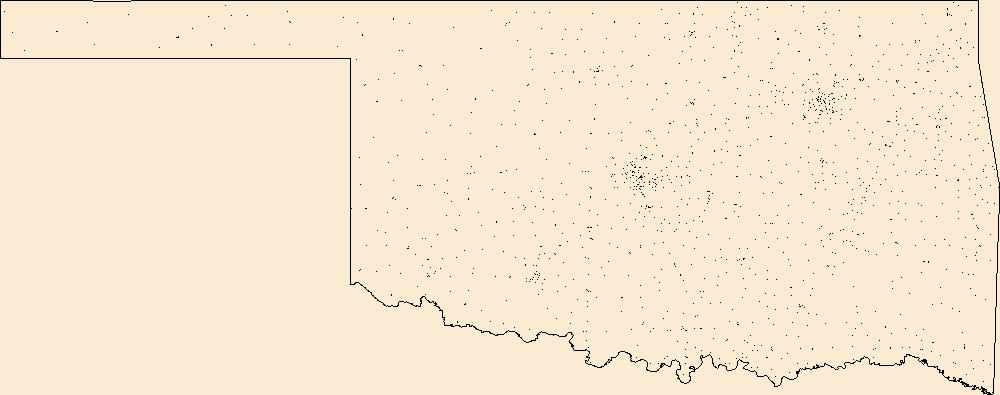
Geospatial data includes structures and other selected map features.
Tags: Adair,
Alfalfa,
Atoka,
Beaver,
Beckham, All tags...
Blaine,
Bryan,
Caddo,
Campground,
Canadian,
Carter,
Cherokee,
Choctaw,
Cimarron,
Cleveland,
Coal,
College / University,
Comanche,
Cotton,
Courthouse,
Craig,
Creek,
Custer,
Delaware,
Dewey,
Downloadable Data,
Ellis,
Esri File GeoDatabase 10,
FileGDB,
Fire Station/ EMS Station,
Garfield,
Garvin,
Grady,
Grant,
Greer,
Harmon,
Harper,
Haskell,
Hospital/Medical Center,
Hughes,
Information Center,
Jackson,
Jefferson,
Johnston,
Kay,
Kingfisher,
Kiowa,
Latimer,
Law Enforcement,
Le Flore,
Lincoln,
Logan,
Love,
Major,
Marshall,
Mayes,
McClain,
McCurtain,
McIntosh,
Murray,
Muskogee,
National Structures Dataset (NSD),
National Structures Dataset (NSD),
Noble,
Nowata,
OK,
Okfuskee,
Oklahoma,
Oklahoma,
Okmulgee,
Osage,
Ottawa,
Pawnee,
Payne,
Pittsburg,
Pontotoc,
Post Office,
Pottawatomie,
Prison/ Correctional Facility,
Pushmataha,
Roger Mills,
Rogers,
School,
School:Elementary,
School:High School,
School:Middle School,
Seminole,
Sequoyah,
State,
State,
State Capitol,
Stephens,
Structures,
Technical School,
Texas,
Tillman,
Town Hall,
Trade School,
Trailhead,
Tulsa,
US,
United States,
Visitor Center,
Wagoner,
Washington,
Washita,
Woods,
Woodward,
structure, Fewer tags

The U.S. Geological Survey (USGS) has compiled a geodatabase containing mineral-related geospatial data for the People's Republic of China. The data can be used in analyses of the extractive fuel and nonfuel mineral industries and related economic and physical infrastructure integral for the successful operation of the mineral industries within the area of study as well as the movement of mineral products across domestic and global markets. This geodatabase reflects the USGS ongoing commitment to its mission of understanding the nature and distribution of global mineral commodity supply chains by updating and publishing the georeferenced locations of mineral commodity production and processing facilities, mineral...
Tags: Asia,
China,
Economic Geology,
Energy Resources,
Fujian Province, All tags...
GIS,
Geography,
Guangdong Province,
Guanxi Zhuang Autonomous Region,
Hainan Province,
Hebei Province,
Hunan Province,
Information Sciences,
Jiangsu Province,
LNG,
Mineral Resources,
NGL,
PGE,
REE,
Shandong Province,
South China Sea,
Tianjin Municipality,
USGS Science Data Catalog (SDC),
Zhejiang Province,
aluminum,
amethyst,
antimony,
antimony occurrence,
antimony resources,
aquamarine,
aragonite,
arsenic,
asbestos,
barite,
barium,
bauxite,
beforsite,
bentonite,
beryl beryllium,
bismuth,
boron,
brine,
brown coal,
bulk cargo,
bulk shipping,
cadmium,
calcium,
celestite,
cement,
cesium,
chromium,,
clay,
coal,
coal (brown),
coal (hard),
coal occurrence,
coal resources,
coalbed methane,
coalfield,
cobalt,
columbium,
commodity,
continuous resources,
conventional resources,
copper,
copper occurrence,
copper resources,
dam,
deposit,
diamond,
electrical transmission lines,
electricity,
electricity generation,
emerald,
energy,
energy generation,
epidote,
evaporite-related potash,
exploration,
extra high voltage,
ferroalloys,
floating storage,
fluorite,
fluorspar,
fluxstone,
gallium,
garnet,
gas,
gas production,
gas terminal,
gemstone,
gemstones,
geography,
gold,
graphite,
gypsum,
hafnium,
halite,
halite (brine),
hard coal,
hydrocarbon resources,
iron,
iron (carbonatite),
iron and steel,
iron ore,
kyanite,
lapiz lazuli,
lead,
limestone,
liquefied natural gas (LNG),
lithium,
magnesite,
magnesium,
manganese,
marble,
maritime port,
mercury,
methanol,
mica,
mine,
mineral,
mineral commodity,
mineral deposit,
mineral exploration,
mineral exports,
mineral occurrence,
mineral processing,
mineral resources,
minerals,
mining,
mining exploration,
molybdenum,
morganite,
muscovite,
natural gas,
natural gas liquids (NGL),
nickel,
niobium,
niobium (columbium),
non-renewable energy,
ochre,
oil,
oil and gas,
oil and gas terminal,
oil production,
oil terminal,
onshore,
peat,
petroleum,
phosphate,
phosphate occurrence,
phosphate resources,
phosphorite,
phosphorus,
platinum-group elements,
porphyry copper,
port,
port terminal,
potash,
potash occurrence,
potash resources,
potassium,
power,
power generation,
power lines,
power plant,
power station,
power transmission,
quartz,
rare earth elements,
recoverable resources,
refinery,
refining,
regasification,
regasification unit (FSRU),
renewable energy,
resources,
rhenium,
rose quartz,
rubidium,
ruby,
salt,
sand,
sand (glass),
sand and gravel,
sandstone,
sapphire,
sediment-hosted stratabound copper,
selenium,
serpentine,
shale gas,
shale oil,
shipping port,
silica,
silver,
smelting,
sodium,
sphalerite,
spinel,
strontium,
sulfur,
sövite,
talc,
tantalum,
technetium,
tellurium,
terminal,
thorium,
tight gas,
tight oil,
tin,
titanium,
tourmaline,
transmission lines,
tungsten,
ultra high voltage,
unconventional resources,
undiscovered resources,
uranium,
vanadium,
vermiculite,
water storage,
zinc,
zirconium, Fewer tags

The structure contours were created using biostratigraphic data in the Paleo-Data, Inc., Tenroc Regional Geologic Database. The depths of the microfossil locations were associated with the wells data provided by the Louisiana Department of Natural Resources. Because of the proprietary nature of the Tenroc database, no actual data can be shown and only those data points contained in the Louisiana State wells database are included in the control points layer. Contouring was accomplished in Dynamic Graphics, Inc., EarthVision modeling software (v.5) using minimum tension gridding. Three custom programs were used to convert contour lines generated from grids in EarthVision to Arc/Info coverages and then to shapefiles....
Categories: Data,
pre-SM502.8;
Types: Downloadable,
Map Service,
OGC WFS Layer,
OGC WMS Layer,
Shapefile;
Tags: Coal,
Coalbed Methane,
Coalbed methane resources,
Contours,
Earth Science, All tags...
Economic geology,
Energy Resources,
Geology,
Gulf Coast,
Gulf Coast Framework Studies,
LA,
Louisiana,
Miocene,
Natural Gas,
Natural Resources,
Natural gas resources,
Oil,
Oil sand resources,
Petroleum,
Resource Assessment,
Surface,
Tertiary Systems,
U.S. Geological Survey,
USGS,
USGS Science Data Catalog (SDC),
United States,
economy,
geoscientificInformation,
gulfcoastframework,
gulfroom,
oilgas, Fewer tags

These mapped faults are modified from Plate 2, Principal structural features, Gulf of Mexico Basin (compiled by T.E. Ewing and R.F. Lopez) in Volume J, The Geology of North America (1991); Plate 2, Geologic map of the U.S. Appalachians showing the Laurentian margin and the Taconic orogen (compiled by D.R. Rankin, A.A. Drake, and N.M. Ratcliffe) in Volume F-2, The Geology of North America (1989); and Plate 9, Tectonic map of the Ouachita orogen (compiled by W.A. Thomas) in Volume F-2, The Geology of North America (1989). This dataset contains basic data and interpretations developed and compiled by the U.S. Geological Survey's Framework Studies and Assessment of the Gulf Coast Project. Other major sources of data...
Categories: Data,
pre-SM502.8;
Types: Downloadable,
Map Service,
OGC WFS Layer,
OGC WMS Layer,
Shapefile;
Tags: AL,
AR,
Anticlines,
Coal,
Coalbed Methane, All tags...
Coalbed methane resources,
Earth Science,
Economic geology,
Energy Resources,
FL,
Geology,
Geology,
Gulf Coast,
Gulf Coast Framework Studies,
Gulf of Mexico,
LA,
MS,
Miocene,
Natural Gas,
Natural Resources,
Natural gas resources,
Oil,
Oil sand resources,
Petroleum,
Resource Assessment,
TX,
Tertiary Systems,
U.S. Geological Survey,
USGS,
USGS Science Data Catalog (SDC),
United States,
economy,
geoscientificInformation,
gulfcoastframework,
gulfroom,
oilgas, Fewer tags

These data provide generalized outlines of major basins and uplifts in the Gulf Coast region modified after Plate 2, Principal structural features, Gulf of Mexico Basin (compiled by T.E. Ewing and R.F. Lopez) in Volume J, The Geology of North America (1991). This dataset contains basic data and interpretations developed and compiled by the U.S. Geological Survey's Framework Studies and Assessment of the Gulf Coast Project. Other major sources of data include publicly available information from state agencies as well as publications of the U.S. Geological Survey and other scientific organizations. In cases where company proprietary data were used to produce various derivatives such as contour surfaces, the source...
Categories: Data,
pre-SM502.8;
Types: Downloadable,
Map Service,
OGC WFS Layer,
OGC WMS Layer,
Shapefile;
Tags: AL,
AR,
Basins,
Coal,
Coalbed Methane, All tags...
Coalbed methane resources,
Earth Science,
Economic geology,
Energy Resources,
FL,
Geology,
Geology,
Gulf Coast,
Gulf Coast Framework Studies,
Gulf of Mexico,
LA,
MS,
Miocene,
Natural Gas,
Natural Resources,
Natural gas resources,
Oil,
Oil sand resources,
Petroleum,
Resource Assessment,
TX,
Tertiary Systems,
U.S. Geological Survey,
USGS,
USGS Science Data Catalog (SDC),
United States,
Uplifts,
economy,
geoscientificInformation,
gulfcoastframework,
gulfroom,
oilgas, Fewer tags
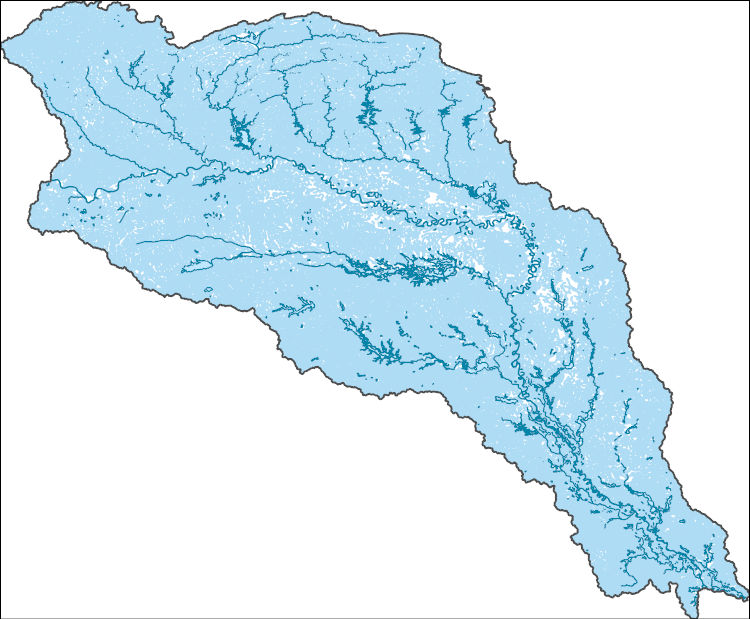
The National Hydrography Dataset (NHD) is a feature-based database that interconnects and uniquely identifies the stream segments or reaches that make up the nation's surface water drainage system. NHD data was originally developed at 1:100,000-scale and exists at that scale for the whole country. This high-resolution NHD, generally developed at 1:24,000/1:12,000 scale, adds detail to the original 1:100,000-scale NHD. (Data for Alaska, Puerto Rico and the Virgin Islands was developed at high-resolution, not 1:100,000 scale.) Local resolution NHD is being developed where partners and data exist. The NHD contains reach codes for networked features, flow direction, names, and centerline representations for areal water...
Tags: AR,
Administrative watershed units,
Administrative watershed units,
Area of Complex Channels,
Area to be submerged, All tags...
Arkansas,
Atoka,
Basin,
Basin,
Bay/Inlet,
Bienville,
Bossier,
Boundaries,
Boundary,
Bowie,
Bridge,
Bryan,
Caddo,
Camp,
Canal/Ditch,
Cass,
Choctaw,
Claiborne,
Coal,
Coastline,
Columbia,
Connector,
Dam/Weir,
De Soto,
Delta,
Downloadable Data,
Drainage areas for surface water,
Drainageway,
Esri File GeoDatabase 10,
Estuary,
Fannin,
FileGDB,
Flow direction network,
Flume,
ForeShore,
Franklin,
Gaging Station,
Gate,
Grant,
Grayson,
Gregg,
HU-4,
HU-4 Subregion,
HU10,
HU12,
HU14,
HU16,
HU2,
HU4,
HU4_1114,
HU6,
HU8,
HUC,
Harrison,
Hazard Zone,
Hempstead,
Hopkins,
Howard,
Hughes,
Hunt,
Hydrographic,
Hydrography,
Hydrography,
Hydrography,
Hydrologic Unit Code,
Hydrologic Units,
Ice mass,
Inundation Area,
Johnston,
LA,
Lafayette,
Lamar,
Latimer,
Le Flore,
Levee,
Lincoln,
Line,
Little River,
Lock Chamber,
Louisiana,
Marion,
Marsh,
McCurtain,
Miller,
Morris,
Murray,
Natchitoches,
National Hydrography Dataset (NHD),
National Hydrography Dataset (NHD) Best Resolution,
National Hydrography Dataset (NHD) Best Resolution,
Nevada,
Nonearthen Shore,
OK,
Oklahoma,
Orthoimage,
Panola,
Pike,
Pittsburg,
Playa,
Point,
PointEvent,
Polk,
Pond,
Pontotoc,
Pushmataha,
Rapides,
Rapids,
Rapids,
Reach,
Reach code,
Red River,
Reef,
Region,
Reservoir,
Rock,
Sabine,
Sea/Ocean,
Sevier,
Sink/Rise,
Sounding Datum Line,
Special Use Zone,
Special Use Zone Limit,
Spillway,
Stream,
Stream/River,
Sub-basin,
Sub-region,
Subbasin,
Submerged Stream,
Subregion,
Subwatershed,
Surface water systems,
Swamp,
TX,
Texas,
Titus,
Topographic,
Tunnel,
US,
Underground Conduit,
United States,
Upshur,
Vernon,
WBD,
WBD,
Wall,
Wash,
Water Intake Outflow,
Waterfall,
Watershed,
Watershed Boundaries,
Watershed Boundary Dataset,
Watershed Boundary Dataset,
Webster,
Well,
Winn,
Wood,
artificial path,
boundaries,
dams,
drainage systems and characteristics,
inlandWaters,
lakes,
ngda,
rivers, Fewer tags
|
|







